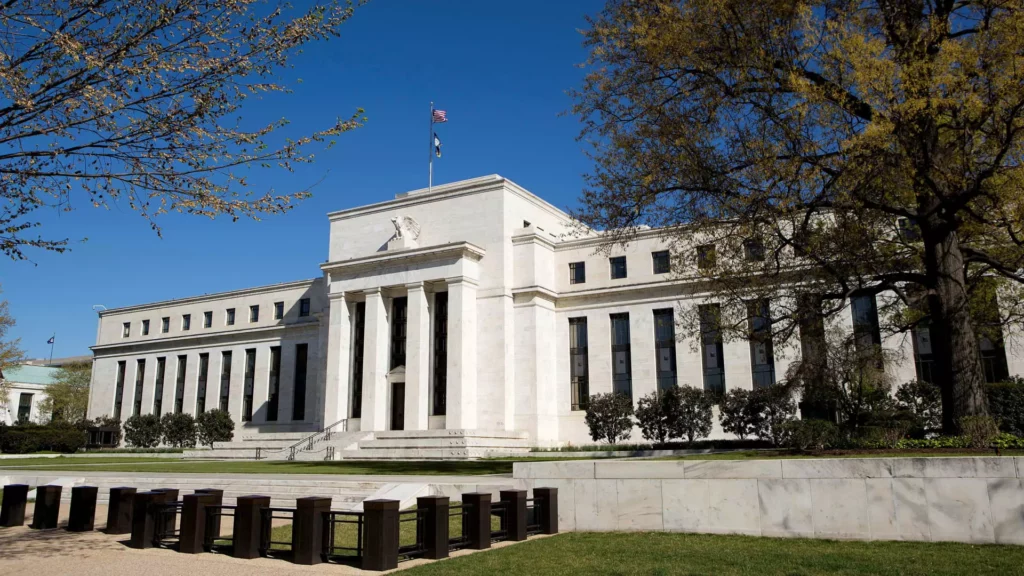In the wake of President-elect Donald Trump’s 2024 election victory, the Federal Reserve has adjusted its benchmark interest rate, lowering it by a quarter point. This decision came amidst a climate of economic uncertainty exacerbated by a prolonged period of high inflation that has significantly impacted the American public’s purchasing power and overall economic well-being. Recent analytics reveal that inflation is trending downward, approaching the Fed’s desired 2% target, allowing policymakers to cautiously lessen rates. This strategic move marks the second rate cut since September and has set the stage for possible long-term changes in the financial landscape influencing everyday Americans.
The federal funds rate, which dictates the cost of overnight borrowing for banks, is intricately linked to consumer borrowing rates. This interconnectedness means that changes communicated by the Fed carry reverberating effects across personal finance spheres, impacting everything from credit card interest to mortgage rates. Prior to this rate cut, a series of aggressive hikes had driven borrowing rates to concerning heights. Consequently, while the announced reduction may seem modest, it represents a vital step towards alleviating some financial strain experienced by households burdened with debt.
Greg McBride, chief financial analyst at Bankrate.com, provided an insightful analogy by comparing the rate hikes to navigating a multi-story building. Although the most recent cut may not dramatically shift the economic perspective for borrowers—moving them to the ‘45th floor’ from the ‘47th’—it nonetheless suggests a slow and steady move towards financial relief.
A significant segment of consumer finance is comprised of credit cards, most of which operate on variable rates tied to the Fed’s benchmark. This means that with the Fed’s decision to lower rates, a gradual decline in average credit card interest rates can be anticipated. Notably, credit card rates surged from 16.34% in March 2022 to upwards of 20% post-hikes. Despite these ongoing financial pressures, analysts caution that credit card holders should not expect immediate and dramatic relief; instead, they may experience only a modest drop in their monthly payments.
To take proactive steps toward managing credit card debt, experts suggest consumers explore better rates or negotiate with credit card issuers. Instead of waiting for the economic climate to improve dramatically, individuals should adopt empowerment strategies that involve direct engagement with lenders to alleviate their financial burdens.
The auto loan sector faces its own set of challenges. Even though recent Fed cuts may ease financing costs, high vehicle prices persist as a barrier for many consumers. Currently, the average five-year auto loan interest rate hovers around 7%, reflecting the tension within a market still recovering from inflation’s reverberations. Financial analysts believe that as competition among lenders increases and incentives rise, consumers might begin seeing relief in auto loan rates, albeit gradually.
Conversely, housing affordability remains a critical concern. While Trump has communicated intentions to lower mortgage rates, the reality is that fixed mortgage rates are tied to broader economic indicators and Treasury yields. A drop in the Fed’s target rates propels mortgage rates downward only to an extent, with current averages around 6.81%. Experts caution that persistent anxieties regarding future economic stability may hinder more significant reductions in mortgage costs.
For borrowers of federal student loans, the implications of the Federal Reserve’s decisions are significantly muted due to fixed interest rates. Thus, any potential benefit from an interest rate reduction is minimal. However, for those with private loans, a variable rate can mean minor adjustments in total monthly payments after the Fed’s rate modifications. Yet, the actual monetary impacts are limited; for example, a nominal cut would reflect only approximately $1 to $1.25 reduction per month for every $10,000 in debt—a far cry from substantial relief.
Students are therefore advised to analyze their options carefully, especially concerning refinancing. Moving from a federal loan to a private one entails relinquishing certain protections such as income-driven repayment plans and potential loan forgiveness, which should be weighed against any perceived benefits of lower interest rates.
As the Federal Reserve continues to navigate the economic landscape post-election, the ripple effects of lowered interest rates will invariably affect various aspects of consumer finance. While some relief may be on the horizon, enduring economic strains necessitate a proactive approach for consumers. Understanding and adapting to these changes is critical as individuals look to secure their financial futures. From managing credit card debt to seeking better financing options for loans and mortgages, consumers must remain vigilant and strategic as they traverse an evolving financial environment.

